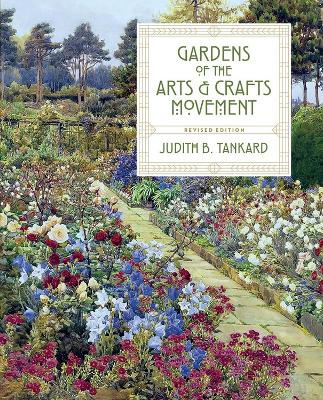Reviewed by annieb123 on
Gardens of the Arts & Crafts Movement is a meticulously researched and written treatise of the subject written by landscape historian Judith B. Tankard. Produced by Timber Press, with an expected publication date of 27th Nov, 2018, this is a solid book, weighing in at 300 pages densely packed with historical info, period source material and photographs.
The book is logically divided into chapters which explain the concepts and lead the reader (relatively painlessly) through a great deal of gardening and architectural history and the theory behind the movement and its subsequent influence on modern gardening. There are specific chapters which showcase many of the houses owned by the leading names of the arts & crafts movement. William Morris' homes, Red House and Kelmscott, are represented as well as designs created and implemented by Charles Rennie Mackintosh, Gertrude Jekyll, and many others.
This is emphatically not a how-to DIY gardening book. These are historically significant gardens mostly associated with the great houses of England. That's not to say that there aren't any takeaways for modern gardeners (on a much smaller more intimate scale). The last 2 chapters are specifically aimed at contemporary gardeners and include an interesting and enlightening philosophical discussion of garden design. The icons of gardening history are here en masse. I didn't count the times Mawson, Jekyll, et al. were mentioned, but they are certainly very well represented in this text. I will also add that even the chapters specifically aimed at modern gardeners are mostly applicable to the 'budget no object' type of gardens (of the rich and famous). The book is full of breathtaking gardens photographed meticulously and on a grand scale.
Final thoughts. Even if you do not now and have never had a demesne, there's a boatload of dream material here. This book is meticulously researched, academic, and well written, but the author writes deftly and I felt a good rapport with the material. The photography is luscious and the historical material and architectural drawings are lovely.
Available in ebook and hardcover formats, well worth a look.
Five stars, for people interested in history and theory, not for practical DIY info.
Disclosure: I received an ARC at no cost from the author/publisher for review purposes.
Reading updates
- Started reading
- Finished reading
- 17 June, 2018: Reviewed
